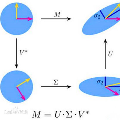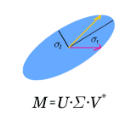Galerkin-based reduced-order models (G-ROMs) have provided efficient and accurate approximations of laminar flows. In order to capture the complex dynamics of the turbulent flows, standard G-ROMs require a relatively large number of reduced basis functions (on the order of hundreds and even thousands). Although the resulting G-ROM is still relatively low-dimensional compared to the full-order model (FOM), its computational cost becomes prohibitive due to the 3rd-order convection tensor contraction. The tensor requires storage of $N^3$ entries with a corresponding work of $2N^3$ operations per timestep, which makes such ROMs impossible to use in realistic applications, such as control of turbulent flows. In this paper, we focus on the scenario where the G-ROM requires large $N$ values and propose a novel approach that utilizes the CANDECOMC/PARAFAC decomposition (CPD), a tensor decomposition technique, to accelerate the G-ROM by approximating the 3rd-order convection tensor by a sum of $R$ rank-1 tensors. In addition, we show that the tensor is partially skew-symmetric and derive two conditions for the CP decomposition for preserving the skew-symmetry. Moreover, we investigate the G-ROM with the singular value decomposition (SVD). The G-ROM with CP decomposition is investigated in several flow configurations from 2D periodic flow to 3D turbulent flows. Our numerical investigation shows CPD-ROM achieves at least a factor of 10 speedup. Additionally, the skew-symmetry preserving CPD-ROM is more stable and allows the usage of smaller rank $R$. Moreover, from the singular value behavior, the advection tensor formed using the $H^1_0$-POD basis has a low-rank structure, and is preserved even in higher Reynolds numbers. Furthermore, for a given level of accuracy, the CP decomposition is more efficient in size and cost than the SVD.
翻译:暂无翻译




